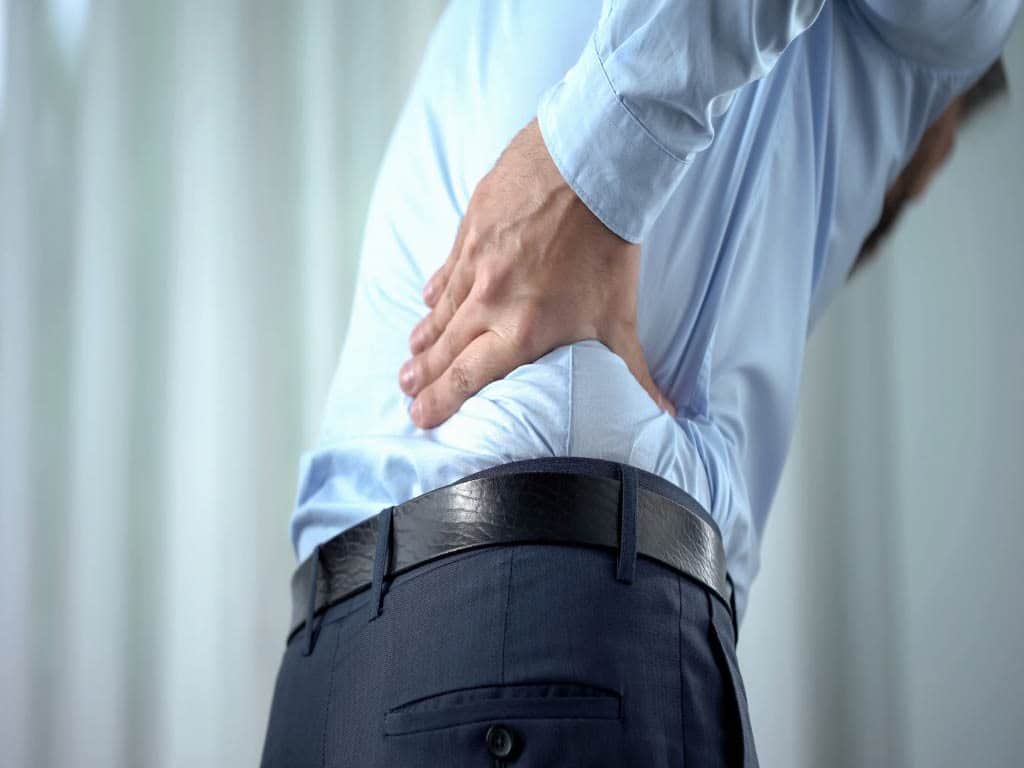
A lower sore back refers to the discomfort or pain in the lumbar region. It is often caused by muscle strain and poor posture, which leads to inflammation. Other reasons involve an underlying health condition that constantly causes pain. Individuals may find relief through pain medications, massage and other home remedies. Some with chronic conditions may use Transcutaneous Electrical Nerve Stimulation (TENS). Finding effective treatments is vital to return to daily activities.
Back pain is one of the common afflictions experienced by many people daily. Strenuous activities make the lower back vulnerable to pain and injury. When it is hurt, it cannot support the upper body well. It also restricts the range of movement. While most pain may go away, some may persist. In the following sections, we will explore the leading causes and conditions affecting the lower back. We will also present the various treatment options available.
What Could A Sore Lower Back Mean?
A sore lower back could mean different things. It is often the symptom of damage or injuries in the muscles, nerves, or ligaments in the back. When any part of the lower back anatomy does not function well, it affects the surrounding tissues, causing discomfort. The pain may range from mild to severe, depending on the cause.
A sore back is a natural response to physical activities when the muscles are overworked. For example, most people feel tenderness the next day after an exercise. These cases are typically shorter in duration and alleviated with rest. On the other hand, persistent back pain may come from a more serious condition that needs comprehensive treatment.
Some people take rest or minimal treatments to manage lower back pain or soreness. However, it can be a cause of concern if the pain does not subside after a few days or weeks. Therefore, it is essential to determine the cause to apply the necessary measures. It can also prevent the pain or condition from worsening.
Symptoms
- Sore back symptoms may feel like a dull ache or burning sensation. This is normal after one to two days of exercise.
- The muscles feel tender to the touch.
- The muscles feel tight and stiff when moving, such as bending or twisting the back.
- Reduced range of motion.
- Localised pain or swelling in the affected area.
- Muscle fatigue or weakness. It includes minor twitching or cramps.
- Lifting heavy objects may aggravate the pain.
- Pain may radiate to the arms or legs.
- Pain that worsens with sitting still or being inactive.
- Difficulty getting out of bed.
- Unable to make sudden movements.

Common Causes Of A Sore Lower Back
Several factors may cause a sore lower back. A common reason is a strain or sprain. These are tears or trauma in the muscles, tendons, or ligaments. It can occur from lifting heavy objects or engaging in repetitive motions. Sudden movements that put excessive stress on the back muscles can also cause strain.
People with existing health conditions such as arthritis and osteoporosis are also more susceptible to back soreness. Arthritis causes inflammation in the joints, including those in the lumbar spine. On the other hand, osteoporosis causes the bones to weaken and become brittle. This makes them more prone to fractures. These medical conditions result in chronic pain.
Moreover, back soreness may come from a bulging disc, spinal stenosis, or degenerative disc disease. When the disc in the spine is displaced, it can put pressure on the sciatic nerve, causing pain in the lower back. Nerve irritation may also radiate to the legs. Various risk factors can increase the chances of developing sore muscles.
Risk Factors
Individuals are more likely to get a sore back due to poor posture and lifestyle habits. For instance, it is prevalent in people with jobs involving the lifting or pulling of heavy objects. Conversely, a lack of physical activity or exercise can weaken the muscles, making them more prone to pain and injuries.
Other factors are age due to wear and tear and obesity or excess weight. As a person ages, the bones, muscles, and ligaments may deteriorate. It reduces their ability to resist force or strain. Meanwhile, obesity increases the risk of back soreness due to additional stress on the spine.

Treatment Options For A Sore Lower Back
The treatment for a lower sore back depends on the cause of severity. Mild cases may be alleviated by conservative measures, such as taking over-the-counter pain relievers and hot and cold therapy. Medications like ibuprofen can help reduce inflammation. Additionally, ice packs are best for newly pulled muscles. Switching to heat packs after a few days can help the muscles relax.
Furthermore, physical therapy is beneficial to strengthen and stretch the muscles. It can also improve posture and reduce chronic back pain. A therapist can recommend targeted exercises and stretches for the back and abdominal muscles to reduce pain and improve flexibility. They may also use massage techniques to help release muscle tension.
TENS therapy is also one of the cost-efficient methods of pain management. It uses a device to deliver electrical pulses to the affected area. This stimulates the nerve roots to block pain signals and increase the production of endorphins. Thus, it provides non-invasive and drug-free pain relief. TENS machines are portable and easy to use.
When To See A Doctor
Muscle soreness is common and usually goes away on its own. However, individuals should see a doctor if severe pain persists for over three days or accompanies unexplained weight loss. Other signs to watch out for are fever, numbness in the legs, and loss of bowel or bladder control.
The abovementioned symptoms may be an indicator of a more serious condition that requires immediate medical intervention. A doctor will perform a physical exam to diagnose the underlying cause of the pain. Hence, they may recommend appropriate treatment options. In severe cases, a health professional may prescribe surgery as a final resort.
Conclusion
A lower sore back is a common complaint of people with physical jobs or health conditions. The pain can be disabling and disrupt daily routines. It happens for various reasons, such as muscle strain and overexertion. More common causes include degenerative conditions like arthritis and osteoporosis. Others are disc disorders that press on the spinal nerves, causing inflammation. Hence, many people try various methods to minimise the discomfort.
The treatments include over-the-counter pain medications, physical therapy, and TENS. Medicines like ibuprofen can help relieve inflammatory conditions. On the other hand, a guided exercise program can help strengthen the muscles and reduce pain. Lastly, a TENS machine can help block pain signals to provide temporary relief. If these methods fail, individuals should seek medical attention for further diagnosis. It is vital to consult a doctor if it also comes with other symptoms like fever or numbness.




















